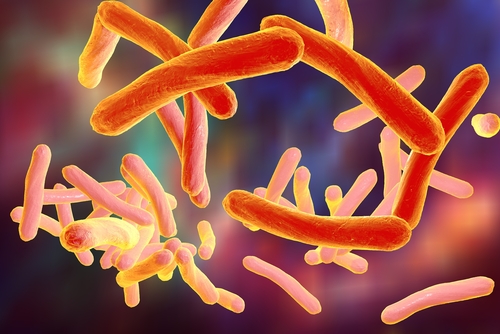Alterations in Gut Bacteria May Be Linked to Eye Dryness in Sjögren’s, Study Says
Written by |

People with Sjögren’s syndrome have significant alterations in the composition of gut bacteria compared to healthy individuals, some of which seem to be directly associated with eye dryness, one of the hallmarks of the disorder, according to a study.
The findings of the study, “Gut microbial dysbiosis in individuals with Sjögren’s disease,” were published in bioRxiv, a preprint biology platform.
Sjögren’s syndrome is a chronic autoimmune disease characterized by abnormal infiltration and accumulation of immune cells inside certain glands, leading to tissue inflammation and eventually irreparable damage. As a result, those affected by the condition usually experience extreme dryness in the eyes and mouth.
“Individuals with autoimmune diseases have been found to have gut microbiome alterations compared to healthy controls, including individuals with spondyloarthritis, rheumatoid arthritis, Behçets, and Sjögren’s,” the investigators said.
“The association between gut bacteria and autoimmune disease is likely a two-way street. On one hand, gut microbiome abnormalities can lead to systemic inflammation and, conversely, systemic inflammation can preferentially deplete beneficial gut bacteria and promote the growth of commensal bacteria with potential pathogenic properties,” they explained.
In this study, a team of investigators from the University of Miami and their collaborators set out to analyze the composition of bacteria living in the guts of patients with Sjögren’s, and look for possible correlations between these bacteria and clinical aspects of the disease.
The prospective study enrolled 21 patients with Sjögren’s, including 13 with a confirmed diagnosis and eight with an unconfirmed diagnosis, who were examined between November 2017 and February 2018 at the Miami Veterans Affairs (VA) Hospital or the Bascom Palmer Eye Institute.
To analyze gut bacteria composition, researchers first isolated bacteria DNA from stool samples obtained from all study participants. To identify all the species of bacteria present in the samples, investigators then sequenced the bacteria DNA, using a technique called 16S pyrosequencing.
All findings were compared to stool samples from 10 individuals that were provided by OpenBiome, a nonprofit stool bank.
Results showed that in all individuals, bacteria belonging to the Firmicutes phylum were the most common, corresponding to approximately 40–60% of all bacteria found in the samples.
Nevertheless, patients with Sjögren’s (both confirmed and unconfirmed) showed alterations in the composition of gut bacteria compared to controls, including:
- A 10% decrease in the amount of bacteria belonging to the Firmicutes phylum;
- A 3-fold increase in the amount of bacteria belonging to the Proteobacteria phylum;
- A 70% increase in the amount of bacteria belonging to the Actinobacteria phylum;
- A 30% increase in the amount of bacteria belonging to the Bacteroidetes phylum.
In addition, stool samples of patients with Sjögren’s contained significantly higher amounts of several classes of bacteria, such as Lactobacillaceae (8.8-fold), Eubacteriaceae (7.4-fold) and Eggerthellaceae (6.2-fold), compared to controls.
Although no differences were found between the two groups according to the Shannon’s diversity index (measures species diversity and distribution in a population), the Faith’s phylogenetic diversity (measures diversity based on the length of the branches of a phylogenetic tree) revealed that patients with a confirmed diagnosis of Sjögren’s had higher gut bacteria diversity compared to healthy individuals (13.57 versus 10.96).
A phylogenetic tree is a diagram that represents the evolutionary relationships between different organisms.
Finally, researchers found the presence of certain classes of bacteria were either directly (e.g. Pasteurellaceae, Ruminococcaceae) or inversely (e.g. Clostridia Family XI, Enterobacteriaceae) correlated with eye dryness and other clinical manifestations of Sjögren’s.
“Our study findings are important as they set the foundation for modulating the gut microbiome as a potential therapeutic approach in Sjögren’s. There are several ways to modulate the gut microbiome, including dietary intake, probiotics, and fecal microbial transplantation,” the researchers said.
Stool transplants have been used to modulate the gut microbiome in people with graft versus host disease — a potential life-threatening condition that occurs in transplant patients when the recipient’s immune system recognizes the donor’s cells as a threat.
The approach “increased abundances of the beneficial bacteria Lactobacillus, Bacteroides, Bifidobacterium, and Faecalibacterium, and concomitantly improved gastrointestinal symptoms such as defecation consistency and frequency,” the researchers said, adding that more studies are needed to translate the findings to Sjögren’s syndrome patients.





